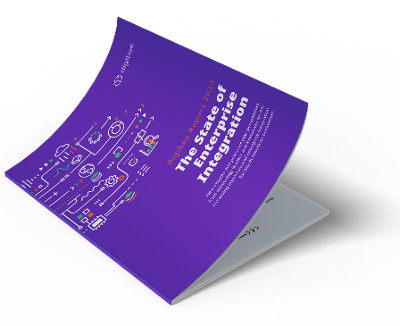
Your organization likely uses multiple systems every day just to get business done. Your company and end-to-end supply chain may use different customer relationship management (CRM) systems and enterprise resource management (ERP) systems to manage day-to-day tasks.
Various departments might jump back and forth between project management software and production software, logistics systems and ecommerce platforms, and different software-as-a-service (SaaS) systems for various clients or vendors.
From sales and marketing to backend logistics and asset and product management, organizational silos lack visibility, making it impossible to make informed decisions for your business.
The complexity of gathering data and insights from multiple sources can be a challenge, especially when the acronyms alone are enough to make your head spin. As a CEO, you need clarity, insight and transparency throughout your organization to understand the state of your business at any given moment.
How much time would you save and how much easier would your job be if all of those systems were integrated? Then you could have all of your programs and associated data available to you instantly, without organizational silos or having to hop from one system to another. An enterprise integration platform as a service (iPaaS) can make that happen.
>> Book a personalized demo with our team of experts and see how Digibee’s iPaaS will bring efficiency to your business.

What is an iPaaS?
An iPaaS solution is a scalable subscription-based service that bridges the gap between your current systems and new technologies, by connecting data and platforms that have never been connected before, regardless of underlying silos or legacy infrastructure.
Recent Gartner Research shows that enterprise iPaaS solutions had 38% growth in 2020, reaching $3.5 billion, becoming the largest stand-alone integration market.
What This Means for Business Leaders
For CEOs and other business leaders, moving toward an iPaaS solution means no more logging into different platforms to gather data and insights from across your organization. It means no longer accessing ecommerce platforms and CRM systems separately, or trying to decipher analytics and gain insights from disparate data.
It means having the ability to connect all of your end-to-end ERP and CRM systems and software into one platform to eliminate silos and integrate programs and data across the enterprise. Just imagine being able to access all of the information you need to gain overall insight into the organization in real time – all in one place. It’s possible, and it can happen in just a few short weeks. Seriously.
How does integration impact business functions?
An iPaaS solution integrates data from multiple sources, including CRM, ERP, ecommerce, and automation integration.
Let’s drill down into how each of these systems serve the business and why it’s important to integrate them.
CRM integration
- Customer relationship management (CRM) systems are critical to store important customer and prospect data and to track customer interactions. Whether your integrated CRM is operational, analytical, or collaborative, CRM integrations can provide a complete picture of your customers in real time and indicate how they relate to and interact with your sales, marketing, and customer service efforts.
ERP integration
- Enterprise resource management (ERP) is software that is used to manage day-to-day activities including product, asset, and project management. ERP system integration is vital to keep everything on track, especially when multiple clients or vendors are involved.
Ecommerce integration
- It’s critical for organizations to have ecommerce integration for real time, accurate, seamless data transfer between your ecommerce platforms and key areas of your business including marketing, sales, inventory, accounting, and your CRM systems.
Automation integration
- Intelligent automation integration can help with artificial intelligence (AI) initiatives, and can help alleviate tedious tasks such as gathering insights and analytics from multiple sources. In a recent Deloitte survey of executives, 73% of respondents say their organization has embarked on a path to intelligent automation. (Which interestingly, jumped 58% from Deloitte’s survey done prior to the pandemic.)
Enterprise Integration is Important, So Why Isn’t Everyone Doing It?
Most business leaders understand the importance of enterprise integration. The recent Digibee State of Enterprise Integration Report 2022 shows that the majority of respondents believe it is a top priority, but few have taken action to make it happen.
93%
say enterprise integration is vital to their business or nice to have
7%
have successfully implemented an enterprise integration strategy
94%
of those who haven’t implemented don’t even have a solution in mind
Enterprise integration is critical, yet it’s clear most companies don’t have a strategy. Why? It may be because decision makers are not aware of the components of an effective integration strategy.
These include:
- Defining the goals of your project
- Securing alignment with your team
- Choosing the right technology
Collaboration is key to successful business integration
C-level executives must work together, along with their respective extended teams and other stakeholders across the organization, to ensure the development of an effective integration strategy. Businesses can only select the right integration solution through collaboration and understanding of cross-functional needs throughout the enterprise.
It’s time to stop using so many different systems and modernize your organization with enterprise integration. Don’t procrastinate. Integrate, automate, and innovate your business with an effective iPaaS strategy.
The State of Enterprise Integration Report by Digibee offers unique, data-based insights into the latest trends in enterprise integration as well as a look at current best practices and changes to expect in the future.
Learn more about Digibee’s innovative approach to integration. Download your free copy of the report today. Or, if you prefer, contact our experts directly for more information.
Your data, fully integrated, in less than three weeks. Let Digibee show you how





















